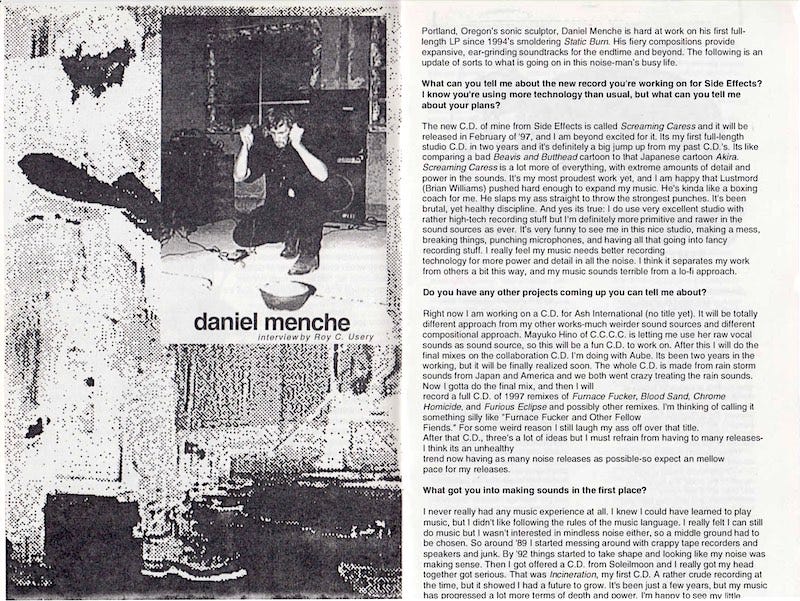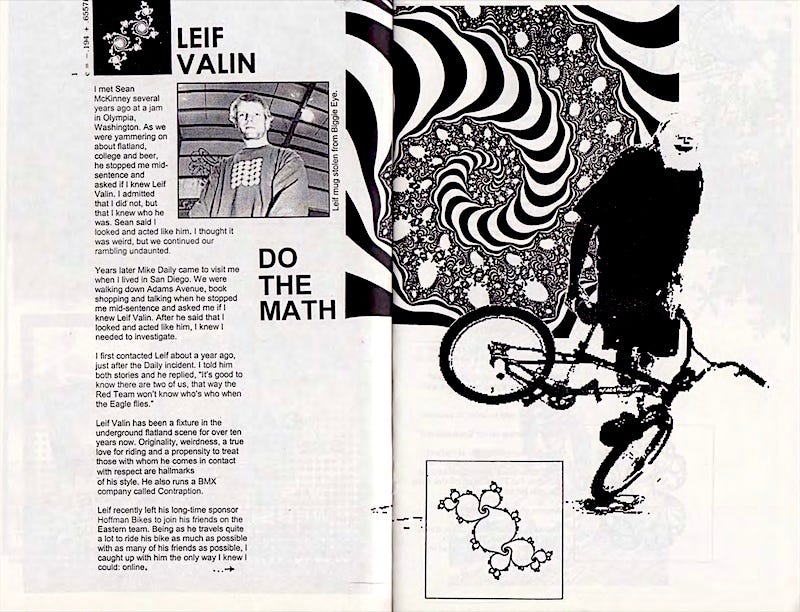You don’t know the name Angela Britt, but if you were familiar with the deepest details her story—from runaway to ranch hand—you might recognize her as a dozen or so characters in the novels of Cormac McCarthy. She was the model for both the bumbly bum Gene Harrogate and the young and doomed Wanda from Suttree for instance. As I read Vincenzo Barney’s article in Vanity Fair, not only was I surprised that McCarthy didn’t have all of that horse knowledge firsthand—like all of his writing, the bits about ranching are very convincing, rife with expert detail—but also how many times the number 47 kept popping up.

Forty-Seven
I was interested in the story because of how frequently and thoroughly McCarthy had alluded to Britt in so many characters in so many of his novels. I thought the allusions to a living yet unknown person was an interesting angle on the figurative phenomenon. Britt knew McCarthy for 47 years. Coincidentally, she has 47 extant letters from him. McCarthy didn’t send her one letter a year, but she managed to keep the same number of letters.
Sometime last century students at Pamona College in California noticed the number 47 popping up around campus. For one, the college is just off exit 47 of I-10. In her article, “The Mystery of 47,” from the October 1, 2000 issue of Pomona College Magazine, Sarah Dolinar writes,
Depending on your point of view, you might call it a tradition built around trivia, or you might call it Pomona’s link to the deep structure of the universe. For instance, were you aware that the organ case in Lyman Hall has exactly 47 pipes? Or that Pomona’s traditional motto, “Pomona College: Our Tribute to Christian Civilization,” has 47 characters? Did you know that at the time of Pomona’s first graduating class in 1894 there were 47 students enrolled? And if you want to go deeper into the mystery, did you notice that the last two digits in that year equal 47 times two?
Many Pomona alumni have deliberately inserted 47 references into their work. Joe Menosky, class of 1979, a writer for Star Trek: The Next Generation, inserted 47 mentions into nearly every episode of the show. Starting on Star Trek, continuing with Menosky on TNG, and through all of J.J. Abrams’s work (e.g., Alias, Lost, Fringe, the Star Trek reboots, etc.), the number 47 has a long history on the screen. Wherever there’s a stray number in the dialog of one of these shows—a time-stamp, an evidence tag at a crime scene, an apartment number—47 does its numerical duty, threading through and connecting the pieces to a larger whole.
David Lynch’s last feature film, Inland Empire from 2006, partially takes place during the filming of a movie. The movie within the movie is called On High in Blue Tomorrows. After an unnerving disturbance during a table read on set, producer Freddie Howard (Harry Dean Stanton) and director Kingsley Stewart (Jeremy Irons) confess to the two leads — Nikki Grace (Laura Dern) and Devon Berk (Justin Theroux) — that they are shooting a remake of an unfinished German production called Vier Sieben — 47, which was itself based on a cursed Polish folktale. The previous project was abandoned after the two leads were found murdered “inside the story.”
Before that revelation, we are treated to a surrealist sitcom featuring a rabbit family going about their day in their living room. Later on in the movie, after an altercation with a some sort of phantom, Nikki flees into Room 47, which, unbeknownst to her, is the living room of the rabbits from television. These allusions start out unbeknownst, but soon they seem ubiquitous. For instance, after the earth’s human population reached 2 billion people in 1928, it took 47 years for it to reach 4 billion in 1975, and another 47 years to double again in 2023.
Let’s look at another one.
Forty-Three
It started as an amount of change.
Once upon a time in the early 1980s, the father of one of the Curb Dogs—a loose-knit crew of skateboarders and BMXers in the Bay Area scene that included Maurice Meyer, Dave Vanderspek, Marc Babus, and future Bones Brigade member Tommy Guerrero—walked from the local convenience store into a house party with 43 cents jingling in his pocket: a quarter, a dime, a nickel, and 3 pennies. In a wacky accent, he said to those assembled, “How come every time I come home from the store, I always have 43 cents in my pocket?!” Everyone laughed it off, but the idea was incepted.1 For this group of skateboarders and BMXers, the number 43 was suddenly very important, and they started seeing it everywhere.

Maurice “Drob” Meyer, the NorCal BMX local some call the Godfather of 43, says it was Rob “Orb” Fladen’s dad who started the 43 phenomenon. In 1986 (which Drob points out is two times 43), a bunch of those NorCal guys visited Wizard Publications in Los Angeles, the home of BMX Action, Freestylin’, and later Homeboy and Go magazines. These publications were our news networks, and they were all helmed by three hyper-creative dudes known as the Master Cluster: Andy Jenkins, Mark Lewman, and Spike Jonze. If skateboarding was a relatively small subculture in the mid-1980s, then BMX freestyle was even smaller. These guys documented it with an energetic blend of wisdom and whimsy that included not only the adjacent action of skateboarding but also street art, underground music, and BMX mythology.
Soon the lore spread, and the numerology followed. Forty-three started showing up in the magazines, zines, and videos. It was known as the coincidence number. We saw it in receipts and change, bank signs and temperatures, longitudes and latitudes, mile markers and measurements. In the late 1980s, skateboard pro-cum-photographer Bryce Kanights had a warehouse ramp in the Bay Area called Studio 43. Ron Wilkerson’s legendary Enchanted Ramp was just off the 5 interstate at exit 43. Though the letters D and C in DC Shoes stand for Droors Clothing, Drob points out that D and C are the fourth and third letters of the alphabet. In Eddie Roman’s 1991 video Headfirst, Mat Hoffman, who is widely considered the Michael Jordan of BMX, mentions the number, exposing a new decade of riders to the cult of 43.
By the early 1990s, the Master Cluster had moved on from BMX, into magazines for young men (Dirt) and the Beastie Boys (Grand Royal). Soon, they moved into other areas entirely. Jenkins went into skateboard art (for Girl and Chocolate Skateboards), Lewman went into advertising (for companies like Lambesis and Nemo Design), and Jonze, as a music video director (for the Beastie Boys, Weezer, Björk, and many others), was already on his way to fame and acclaim in Hollywood. In 1995 they were the subject of a one-page profile in Wired Magazine. The page number? 43.
Have you ever learned a new word and then started seeing it everywhere? This is what the literary theorist Kenneth Burke called “terministic screens.” Burke would say that the word was always there, but you were filtering it out, obscuring it with ignorance. Once it became a part of your terministic screen, only then did you start seeing it. Forty-three is a prime number. As an angel number, 43 is highly positive and gives you hope anything is possible if you believe and pursue it. Says a popular angel number website, “People who regularly see number 43 should trust their own inner voice in all things they do.” Everyone knows you can do this with any number, but when you share that number with a group of like-minded people, the power is undeniable.
“Today, you can see and hear references to 43 in movies by Eddie Murphy, Adam Sandler, and TV shows by Dave Chapelle,” the flatland BMX professional Dave Nourie writes. In Spike Jonze’s 1999 feature film, Being John Malkovich, Malkovich’s apartment number is 43, a nod to Jonze’s BMX roots. Nourie calls these planted 43s “acts of agriculture,” intentional allusions to an inside joke held by a few practitioners of a niche action sport, but the number has leaked into the larger world. Growing up, the novelist Rachel Kushner ran with Tommy Guerrero and others in the NorCal skateboard and BMX scene. As she writes in her essay, “The Hard Crowd,” “Forty-three was our magic number. I see it and remember that I’m in a cult for life.”
Forty-Two
Everybody knows the meaning of life is 42.


















